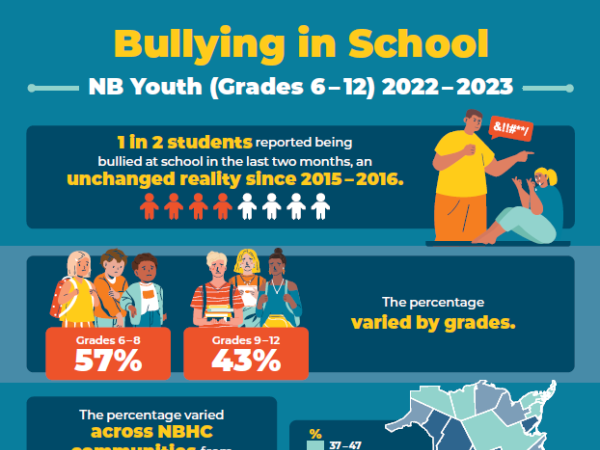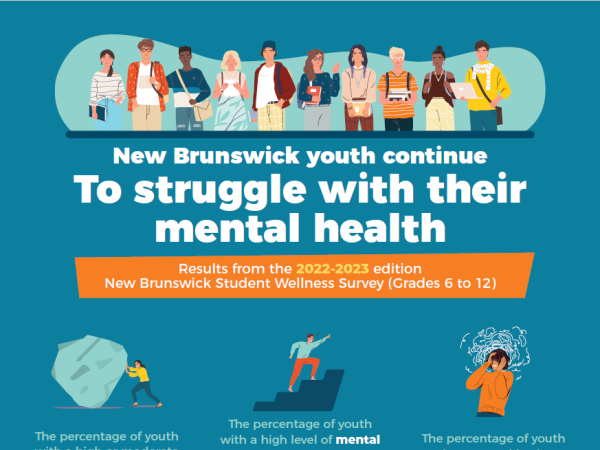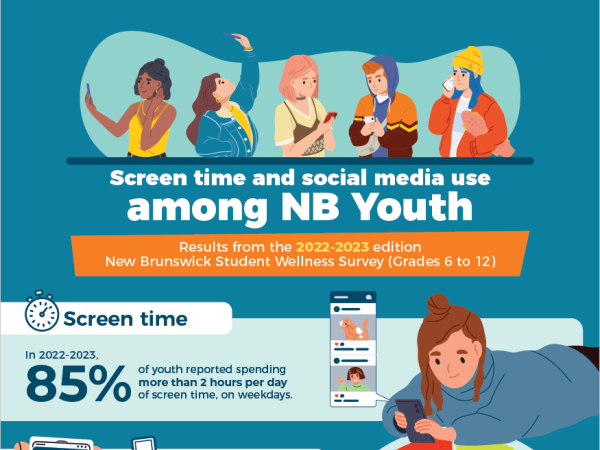The 2022-2023 edition of the New Brunswick Student Wellness Survey was completed by 13,000 students in grades 4 and 5, and 45,000 students in grades 6 to 12 in November and December 2022. Parents/guardians were also surveyed but an insufficient number of respondents prevented results from being published. Parents/guardians were asked questions about their children’s social and emotional development and physical health. Students were asked questions about their social and emotional development, physical health, substance use, and experiences at school and in the community.
The results were released on October 25, 2023.
Key Observations from 2022-2023 Edition
- Youth’s ability to adapt to challenges is going down, while the percentage of youth who struggle with their mental health is steadily rising.
- Youth who identify as non-binary and those with a 2SLGBTQIA+2 status: Compared to their peers, a smaller percentage have a high or moderate level of resilience or a high level of mental fitness, and they report worse mental health.
- Social media use, an emerging risk factor for mental health, is increasing among youth.
- Regular smoking among youth is going down, and regular vaping and cannabis use has remained relatively stable since 2021-2022.
For more information on these observations, consult our article Key Observations from 2022-2023 Edition.
Quick Links
Publications
Data Tables
Explore the data tables below to learn more about the demographics of students in New Brunswick, as well as their social and emotional development, physical health, substance use behaviours, and their engagement in their schools and communities.





